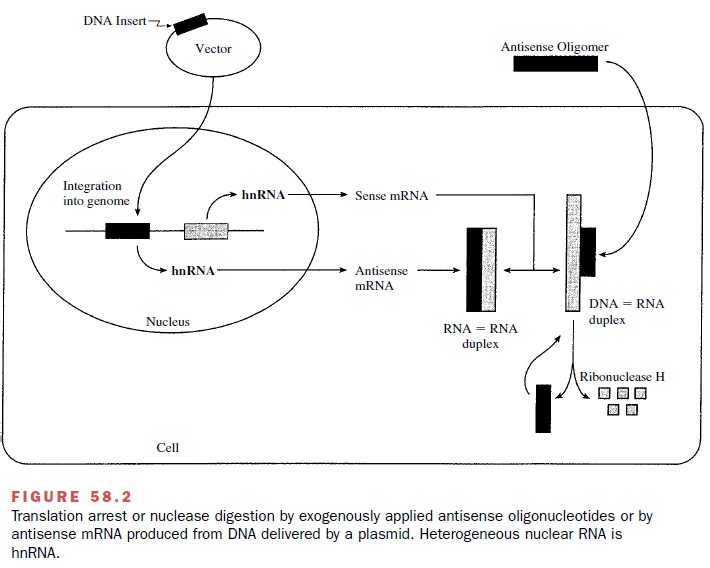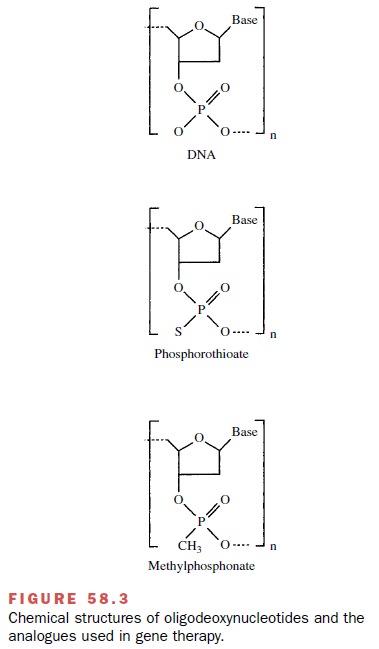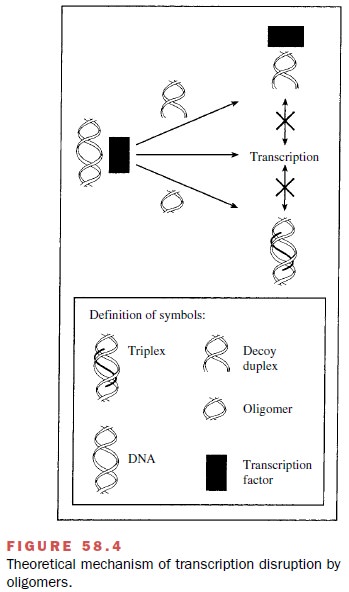Chapter: Modern Pharmacology with Clinical Applications: Gene Therapy
Antisense
ANTISENSE
The antisense approach is use
of nucleic acids to reduce the expression of a specific target gene. As shown
in Figure 58.2, a small piece of DNA, an oligodeoxynu-cleotide that is in the
reverse orientation (antisense) to a portion of a target messenger RNA (mRNA)
species, is introduced into a cell and a DNA–RNA duplex is formed by
complementary Watson-Crick base pairing. Cessation of protein synthesis then
may result from the rapid


Cells and or-ganisms protect themselves against foreign DNA and
RNA by producing nucleases that degrade phosphodi-ester bonds in
oligodeoxynucleotides. Chemical modifi-cation of the phosphodiester moiety can
produce nucle-ase-resistant oligomers. In the two most common chemical
analogues, the backbone phosphate is replaced either with a methyl group to
form a methyl phosphonate or with a sulfur group to form a phosphorothioate
(Fig. 58.3). These modifications grant extra stability to the oligonucleotides,
allowing for a longer half-life in vivo.
The antisense RNA can also be
generated within cells after delivery via a plasmid or attenuated virus
containing a suitable promoter that controls expression of the antisense strand
using methods of gene insertion described later (Fig. 58.2). In addition to the
strict anti-sense strategies, several related approaches have been considered.
Catalytic RNA, catalytic DNA, or ribo-zymes capable of degrading complementary
mRNA may decrease translation of targeted sequences. Oli-gomers designed to
interact with genes directly via Hoogsteen hydrogen binding in a triplex formation
have been suggested as a means of disrupting transcription (Fig. 58.4).
Transcription factor decoys that are du-plexes designed to bind to a particular
transcription fac-tor and prevent its normal function are another ap-proach
examined in the context of NF B blockade. These strategies, like antisense
itself, do not require in-tegration into the genome, and thus they share the
phar-macological problems of absorption, distribution, me-tabolism, and
elimination of any traditional drug not based on nucleic acid.

Related Topics